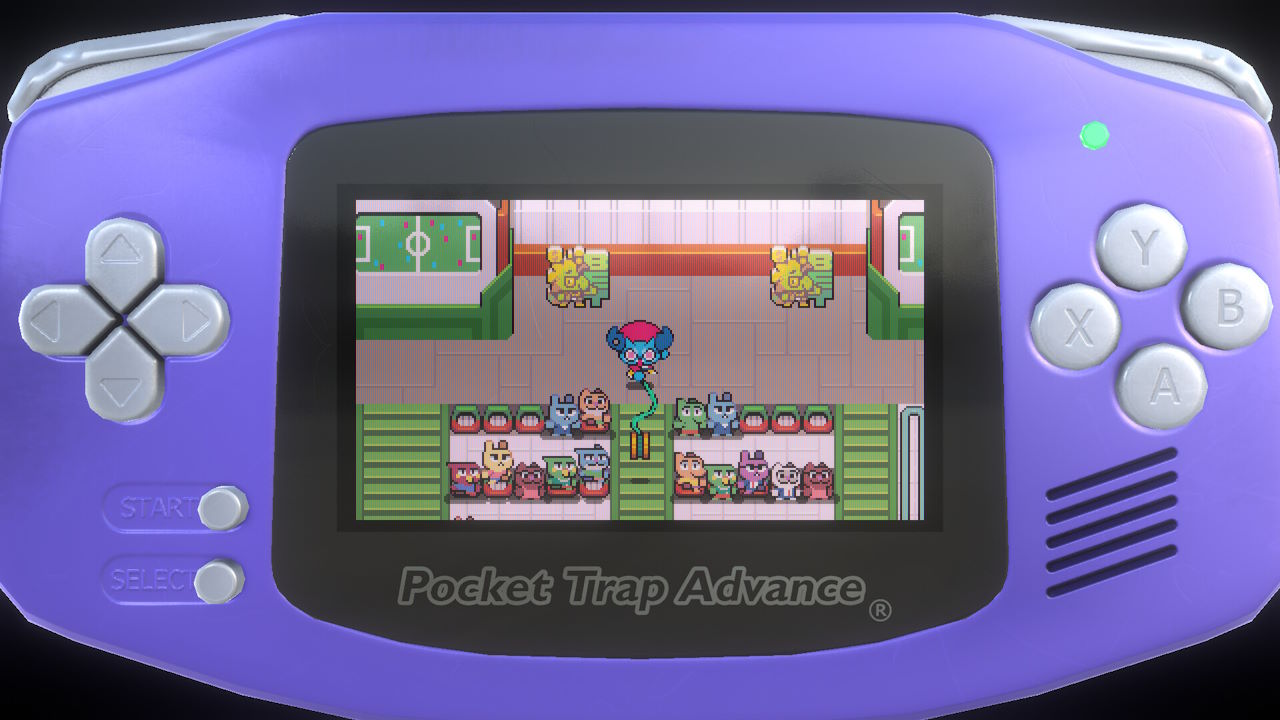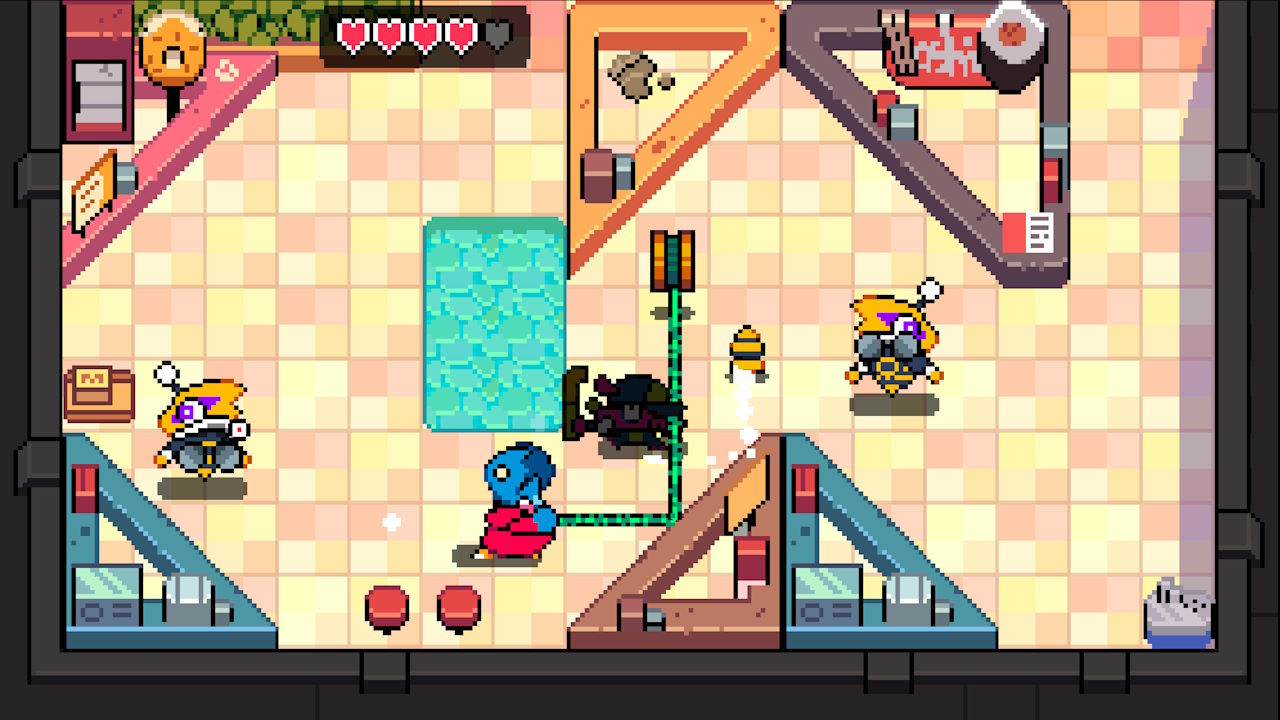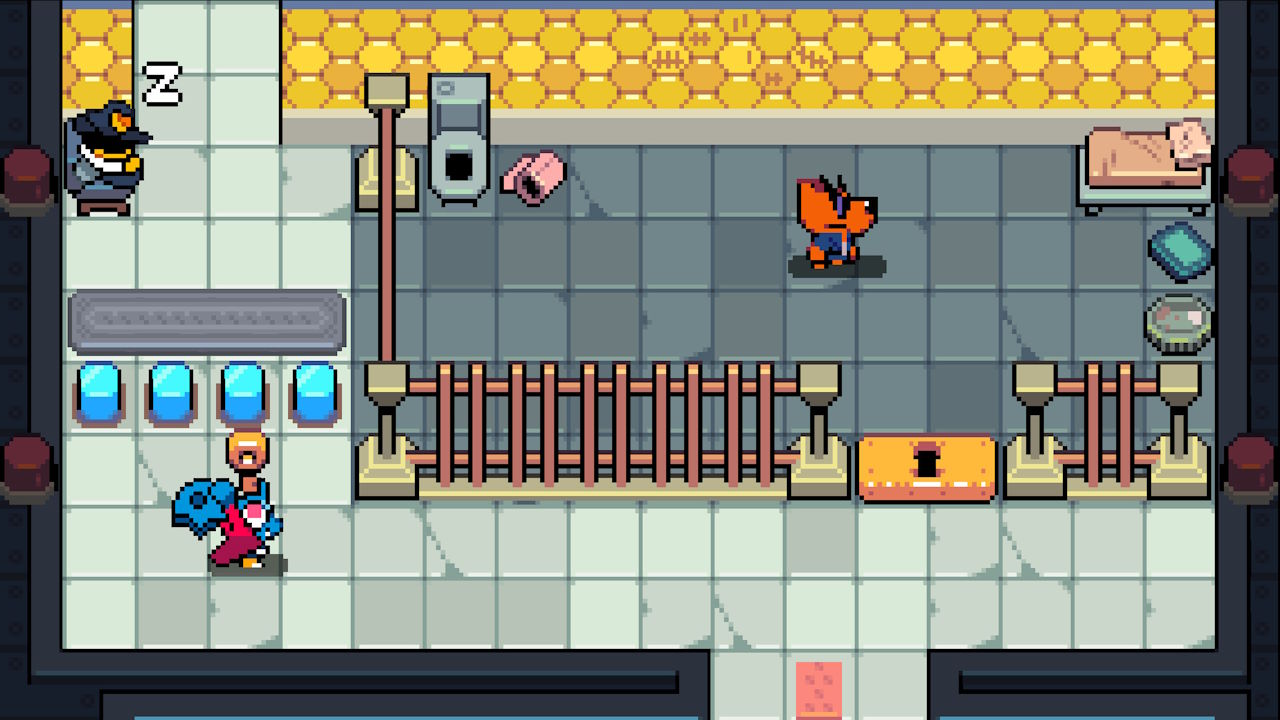Pipistrello and the Cursed Yoyo interview: “He’s totally a spoiled kid”
Following the release of the demo of self-professed “Yoyovania” Pipistrello and the Cursed Yoyo by Pocket Trap, we caught up with the studio’s co-founder and producer, Henrique Caprino for an interview.
Henrique was generous enough to answer some of our burning questions following our time with the game, and you can read his answers in full below:
Pipistrello is a pretty big departure from Dodgeball Academia, what made the team want to move from Dodgeball RPG to a Yoyovania?
To be completely honest, what usually happens after one of our production cycles is that we get totally burned out! After working on a game for 2, or 3 years, I think I can speak for everyone on the team when I say we all get tired of seeing the same visual style, and tired of solving game-design problems only pertaining to the same game genre. We as developers also need some variety in our lives, and we like new challenges! Not to mention that, commercially speaking, pivoting from one genre to another allows us to broaden our potential player base, and diversify our studio’s expertise. But we also have a passion for a multitude of different genres and visual styles, so we try to create all the different kinds of games we love to play!
There aren’t many games that lean into the GBA aesthetic over that of retro home consoles, what inspired this?
We all grew up playing GBA games and are very fond of the Game Boy generation as a whole. The GBA was especially interesting to take inspiration from because of its impressive display of colors and its library of “genre-defining” games. We love the overall aesthetics of the GBA, and thought that these sprite proportions and screen limitations could bring a lot of cool opportunities for game and level design. Plus, we also have this feeling that there’s a large audience out there that misses the GBA era and could easily relate to our game.
Speaking of the GBA, did they have to clear the zoom-out screen? Was that nerve-racking?
I’d say it still is nerve-racking (laughs). We of course tried to evoke the idea of a real-deal GBA, but not without sufficiently changing it around and adding our special flavor to it. We’re also calling it the “Pocket Trap Advance”, so we’re steering clear of any complications. (We hope this is enough, Nintendo, please!)

There was a massive selection of bottle caps (Badges) that changed how you played in the demo, but I assume they aren’t all just handed to you in the full game, how do you obtain these?
Nice catch! We wouldn’t be calling the game a “Zelda-like Yoyovania” if there wasn’t a lot of exploration and collectibles involved. You’ll find these Badges – which work like toggleable abilities to customize the way you play – and also other kinds of upgrades, like Petal Containers and Blueprints, by exploring the city’s districts and their many dungeons – er, I mean, businesses and shop interiors (laughs).
A yoyo isn’t exactly a typical video game weapon, what made them decide on that?
We enjoy experimenting with objects and gadgets that could generate interesting – and more importantly, relatable – game mechanics, besides your usual swords, shields, bows, guns, etc. Don’t get me wrong, we love swords but we also like yoyos (laughs). We felt like the yoyo was a very flexible object that enabled a lot of intricate level designs. It can not only be a powerful whip-like weapon for combat, but also a great tool for movement and platforming, as well as puzzle-solving, which are the three main pillars of Pipistrello. We knew we wanted to make a game in an urban environment and also try to create a relatable universe with a touch of nostalgic feeling for the 2000’s – hence the GBA inspiration – so the yoyo was yet another perfect and natural fit for the game.
The character of Pippit is quite an unusual protagonist, an almost spoiled rich kid. What made them decide on that?
He’s totally a spoiled kid! I think it’ll be quite clear from the story prologue that he only comes home to ask for money. He’s been living off his auntie’s profits while still showing complete disregard for the source of this money, the family’s corporate empire. We feel like pitting strong personalities against each other creates the best story beats, and players will come to see Pippit and his auntie hilariously bickering over who’s right many times throughout the adventure!

How was the demo feedback? Have any changes been implemented from fan comments?
Player feedback is always a driving factor in our game design decisions. The online feedback we got from our demo was already a great motivator for several refactors, but the opportunity we had to watch and interact, in person, with over a hundred players during PAX East 2024 was truly invaluable. We have improved on many of the points brought up and the trouble spots we identified live. These were things such as puzzle layouts, combat difficulty, UI and user-experience issues, and of course, several surprising bugs in the code! Players stumbled upon a cutscene bug which allowed you to change the player’s facing direction, completely disrupting the visual effects and making the story just a little more out-of-the-world than it already is. Another bug that cropped up live was a bad interaction of the Moon Badge, which makes your yoyo bounce off of any wall, with the gears in the skyscraper, blocking players from progressing in the level.
How does the combat evolve over the length of the game?
To keep things fresh, we introduce new yoyo combat moves and new enemies with each new city district and dungeon. Players have access to a selection of powerful Charged Moves, and also easy-to-use, hard-to-master Special Moves. And in the best Pocket Trap fashion, it’s the novel combinations of these elements which we feel bring out the most fun. For example, players will come across a construction-working welding-mask shielded slime enemy, which normally needs to be stunned and attacked from behind, but later on there are spots where you can’t just go around them, so you must look for the appropriate diagonals to create an attack trajectory for your yoyo. Top that up with a pistol-wielding police bee-cop enemy that also takes advantage of diagonal tiles, and now you’ve got yourself a pretty juicy battle arena.
What games are you playing in your downtime, if you have any?
During my downtime, I like to play games for casual fun and games that could inspire me for new game ideas. Recently I’ve played Beyond Good and Evil, Flock and Kunitsu-Gami. I’ve now restarted playing Tears of the Kingdom and Elden Ring for the DLC!

Can we expect the release date news soon?
We are currently in the later stages of development and it’s all going really well! We can’t promise any release date right now, but you can expect an announcement soon. We hope everyone’s looking forward to playing the full game!
Have you faced any challenges during development so far?
Speaking about game design, the limited screen real estate was a real double-edged sword. We feel like it forces us to get creative and distill ideas to their most efficient form, removing all sorts of noise, which tremendously helps with player comprehension and the readability of a level. But sometimes, it can just get in the way, and there are quite a few times where we just begged for a little more room to make an idea fit more comfortably!
We are guessing you’re fans of top-down Zelda games. Favourite one?
If we’re not supposed to mention the obvious choice of The Minish Cap (laughs), many people on the team love A Link Between Worlds on the 3DS. Though of course, it’s difficult to choose the best one! We also can’t ignore the first The Legend of Zelda on the NES, which, even with all its jankiness and game-design quirks from 1986, still holds up surprisingly well conceptually-wise after all these years. Just as Nintendo went back to study it before production on Breath of the Wild, we also wanted to take inspiration from it, especially after the heavily story-driven Dodgeball Academia, so players will find a more gameplay-oriented overall design in Pipistrello with a lot of freedom to choose exploration paths, and completely optional upgrades.
Thanks again to Henrique, co-founder and producer at Pocket Trap, for answering our interview questions on Pipistrello and the Cursed Yo-Yo.




